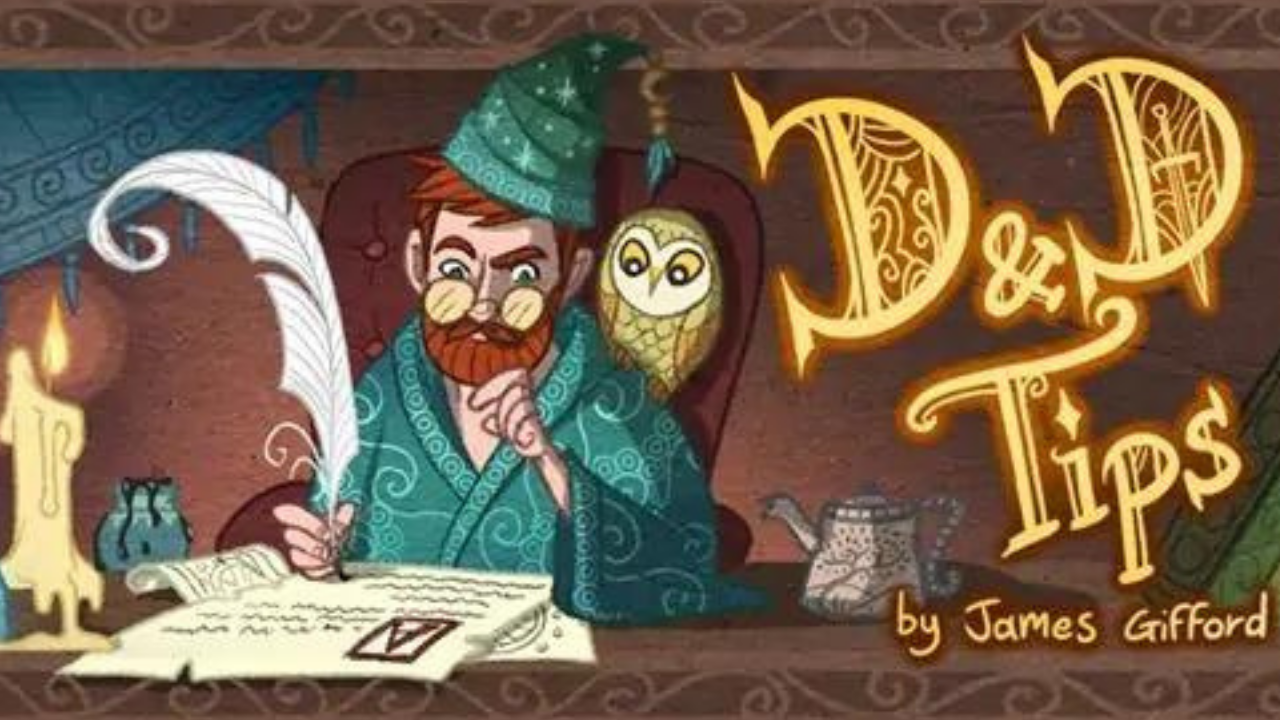Making Treasure Valuable – D&D Tips with James Gifford
Feb 09, 2018
“You find 40 gold pieces. Two level 1 scrolls and a dagger.” A collective yawn ensues.

Sound familiar? Making treasure sound ‘valuable’ can be tricky, but there are ways to make it catch your player’s eye without simply throwing more gold or more magic into the pile.
Name your items. Treat key objects and weapons like NPCs, give them a name, a personality and description of their own. There are an infinite variety of daggers in the imaginary world, and not all of them must be magical to be treasured. Treasure hoards rarely contain unused objects. They’re dusty, damp, partly rusted but still salvageable. Their past owners might leave their mark, etch names into the blade or embroider the cloaks with elaborate sigils and patterns. Objects of treasure engage the senses. Consider how objects feel, how they might smell or sound when used or struck. A well-balanced sword that is painful to hold and screams when it draws blood, Book bound in dry leaves rustles softly at a touch, the pages smelling of a long-forgotten forest. Though the hoard is vast, many objects might be damaged beyond use…the disappointment of loss overcome by the satisfaction that at least one of the potion bottles survived.

One time, my group were searching for a Holy symbol – an amulet that cures vampirism. As the centrepiece of the treasure trove, I wrote this description beforehand:
This large gold amulet is shaped like the sun, with two angels encircling the clear glass at its centre. The metal is comfortably warm to the touch and as the glass catches the sunlight, it shines with a glorious radiance. On the back, an inscription reads in an archaic script: “In dawn’s first light, my fire will gleam, To purge the wicked and redeem.”
They ended up losing it. The bastards. But it’s descriptions like this that add to the awe-inspiring atmosphere of the moment.
Not all treasure has to be “Awe-inspiring” either. There is value in non-magical items. Finding several barrels of Dwarven Ale, complete with silver tankards for their convenience is bound to catch someone’s eye. Or perhaps a well-worn tome containing a variety of… erm… Mindflayers… in suggestive poses? Better not perception check those stains on the cover…

Such items are mundane but have roleplay value. They give an opportunity for the group to react. For the Cleric to disapprove haughtily as the Rogue pocket’s the dead wizard’s soft-core porn. They needn’t have context or economic value but are simply available to use: a pretty crystal that hums when swung. A Slashed portrait. A complete collection of rusty melon ballers. Cursed ones, of course.
Consider the mood and theme of the game. In a steam-punk game, rare power-crystals and mechanical appendages are more valuable than gold. Gothic settings might have all kinds of lost and sinister items, shrouded in mystery, stained in blood…

Of course, it’s a tall order to expect every pouch to have a well-written backstory. Place details where they count; an inscribed message or rune on the hilt of the sword builds detail into the world. Books and journals detailing the heroic deeds of past heroes add a layer of history to the game. I sometimes allude to past characters the players have come across in bard songs, statues and tapestries for a chance to remember and comment on their glory days in and out of character.
Treasure should be savoured, like describing a delicious meal, it should make the player’s mouth water. Having it in view but out of reach is tantalising. Feed the players rumours of their existence. Place them behind a force field, or at the top end of the dragon’s cave.
Dangle that carrot my fellow DMs and make them jump for it!
James Gifford – Creator of Dungeon Diaries
Find out more about Dungeon Diaries or buy a copy for yourself!
Follow James on Twitter – @MrJamesGifford
Check out his other work – http://www.jamesgiffordillustration.com/
Grab a free guide on how to grow your stream or podcast from scratch. Or perhaps a guide on creating your social media content?

